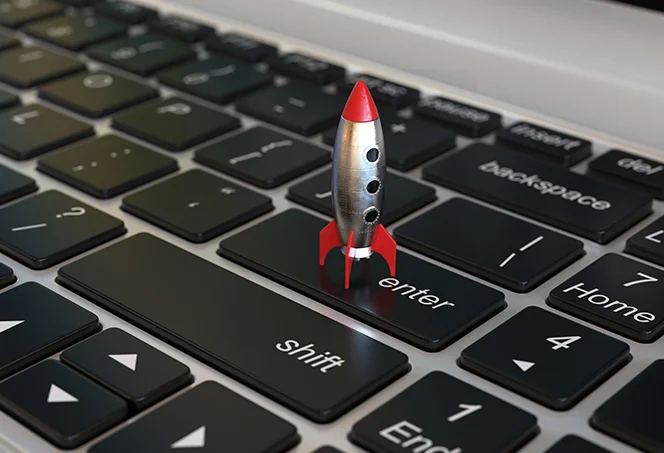Over time, dust, cluttered files, and unused programs can slow down your PC or laptop. Regular cleaning—both physically and digitally—can keep your computer running fast and smooth.
Follow this step-by-step guide to clean your PC or laptop and boost its performance!
Dust and dirt can clog vents, causing overheating and performance issues.
✔ Turn off and unplug your PC/laptop before cleaning.
✔ Use a soft microfiber cloth to wipe the screen and keyboard.
✔ Use compressed air to clean dust from vents, keyboard gaps, and USB ports.
✔ If possible, open your PC case and carefully remove dust with a small brush or compressed air.
✔ Clean your mouse and external devices using alcohol wipes.
🔹 Why do this? Reduces overheating and improves airflow for better cooling.
Unused apps take up space and slow down your system.
✔ Windows: Go to Settings → Apps → Installed Apps and uninstall unused programs.
✔ Mac: Drag unwanted apps to the Trash, then empty it.
🔹 Why do this? Frees up storage and improves boot speed.
Some apps launch at startup, making your PC slow to start.
✔ Windows: Press Ctrl + Shift + Esc → Go to Startup Apps → Disable unwanted apps.
✔ Mac: Go to System Settings → Users & Groups → Login Items → Remove unnecessary startup apps.
🔹 Why do this? Reduces boot time and makes your PC start faster.
Temporary files and cache take up space and slow down performance.
✔ Windows:
- Press
Win + R, type%temp%, and press Enter. - Delete all files in the folder.
✔ Mac: UseFinder → Go → Go to Folder, type~/Library/Caches/, and delete unnecessary cache files.
🔹 Why do this? Frees up disk space and boosts speed.
Viruses and malware can slow down your computer and compromise security.
✔ Use Windows Defender (Windows Security → Virus & threat protection → Scan now).
✔ Install a trusted antivirus like Malwarebytes or Bitdefender for deeper scans.
✔ Avoid downloading software from untrusted websites.
🔹 Why do this? Keeps your system secure and running efficiently.
If you use a HDD (Hard Disk Drive), defragmenting helps improve performance.
✔ Go to Settings → System → Storage → Optimize Drives.
✔ Select your HDD drive and click Optimize.
🔹 Why do this? Speeds up data access and improves performance.
🔹 Note: SSD users should NOT defragment, as it reduces lifespan.
If your PC is still slow after cleaning, consider upgrading to an SSD (Solid State Drive).
✔ SSDs are much faster than HDDs and reduce boot time to just a few seconds.
✔ You can install Windows and frequently used programs on the SSD while using HDD for storage.
🔹 Why do this? Upgrading to an SSD can make an old PC feel brand new!
Regular updates fix bugs, improve security, and enhance performance.
✔ Windows: Settings → Windows Update → Check for updates.
✔ Mac: System Settings → Software Update.
✔ Update graphics and device drivers from manufacturer websites (NVIDIA, AMD, Intel).
🔹 Why do this? Keeps your system stable, fast, and secure.
Your browser stores cache, cookies, and extensions, which can slow it down.
✔ Clear browser cache: Go to settings → Privacy & Security → Clear Browsing Data.
✔ Disable unnecessary extensions: Keep only essential ones.
✔ Use a lightweight browser like Edge, Chrome, or Firefox.
🔹 Why do this? Improves browsing speed and reduces memory usage.
Too many background apps can consume RAM and slow down your PC.
✔ Windows: Settings → Apps → Installed Apps → Disable background apps.
✔ Mac: Activity Monitor → Close resource-hungry apps.
🔹 Why do this? Frees up RAM and CPU resources for better speed.
By following these cleaning and optimization steps, you can:
✔ Boost speed and performance
✔ Reduce overheating and crashes
✔ Free up storage and RAM
✔ Extend the lifespan of your PC/laptop
How often should you clean your PC?
🗓️ Physical cleaning – Every 2-3 months
🗑️ File cleanup – Monthly
🔍 Malware scan – Weekly
🚀 Try these steps today and enjoy a faster, smoother computer! 🔥
👉 Which step helped you the most? Let us know in the comments! 😊
